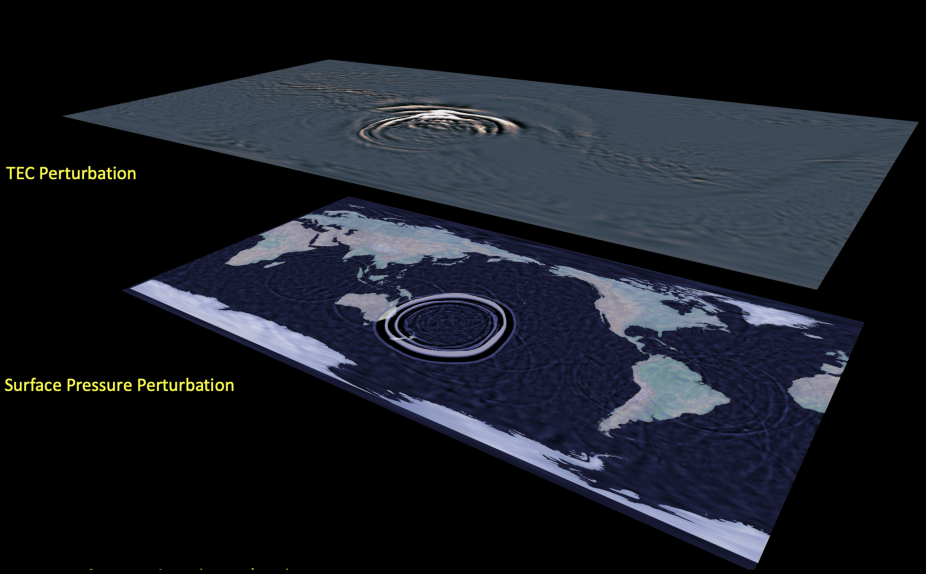Geophysical Research Letters: As one of the most powerful volcano eruptions on record, the Hunga Tonga-Hunga Ha'apai Volcano produces waves that ripple through the atmosphere and near space environment. These wave signals have been recorded by observations from instruments on the ground and from satellites, and they propagate around the Earth multiple times. This event provides a rare opportunity to study the strong and direct connection of the whole atmosphere system. The challenge is for a model to be able to represent the key processes in the whole atmosphere system and to have sufficient spatial and temporal fidelity to gain a realistic global picture of the event. This is achieved in study by using the high-resolution Whole Atmosphere Community Climate Model with thermosphere/ionosphere extension (WACCM-X). The model is able to simulate the global propagation of the waves, and the model results compare favorably with observations from the surface to the thermosphere and ionosphere.
Model Output Link Correction:
The Globus connection point for the WACCM-X Hunga-Tonga simulation output, provided in the Data Availability Statement of this GRL paper (https://doi.org/10.1029/2023GL103682) is incorrect. The correct link is: Log in to use Globus Web App.
The QR code is: (See attached png file).

QR code
Geophysical Research Letters is delighted to highlight this research article on

This plot shows the surface pressure perturbation (lower layer) and total electron content (TEC) perturbation (upper layer) from the SIMA/WACCM-X simulation of the Hunga-Tonga volcano eruption event.